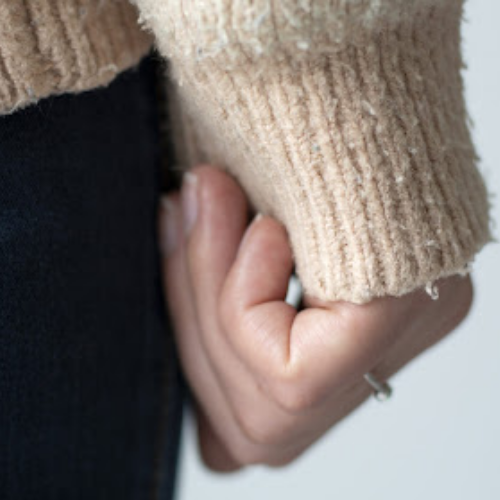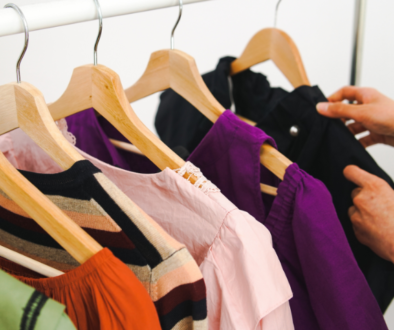Pilling
What is pilling?
Pilling is defines as the formation of bunches or balls of tangled fibers located on the surface of a specific fabric or material. These small balls are also known as surface lint, or, fuzz balls. There are several factors that affect pilling. Some of these factors include fiber type, fiber dimensions, yarn, and even fabric construction. These factors also affect the size and degree of pills that develops on a given fabric.
In fact, pills can vary from wearer to wearer. Therefore, the same fabrics may form pills in one way for one wearer, while pilling may exhibit differently for another wearer. In addition to pills occurring, always take note of slight color loss or frosting (a change in the color of a material caused by abrasion) in areas pilled from being worn.
Pilling Sweater

Factors That Affect Pilling
Rubbing and abrasion on the surface of the fabric, contribute to the entagelemt of the fibers along with the formation of pills. There are a multitude of factors that affect the development and degree of pills that occurs.
1) Fiber Type
Pills will develop readily on fabrics made up of short fibers, since they will work out the yarn construction more easily compared to other fibers. On the other hand, longer filament fibers, which generally consists of synthetic yarns, will take a longer time to form pills compared to other fibers.
2) Fabric Construction
Thick or bulky yarns that’s made up of loosely twisted fibers will pill more readily than tightly woven fabrics. On the other hand, fabrics that’s made up of tightly twisted yarns are most resistant to pills since the fibers are more secure compared to other fabrics. Tightly woven fabrics don’t allow the yarn to move and untwist, and will in most cases not develop any pills.
3) Fabric With Surface Nap
Fabrics with a soft or fuzzy finish produced by brushing the fabric during manufacturing, such as flannel or brushed twill, will put more rapidly than most other fabric constructions due to napped finish.
4) Non-Woven Fabrics
Some finishes and sizing’s applied to fabrics may minimize the development of pills. These finishes may be permanent, while repeated laundering or dry-cleaning will diminish others. The loss or removal of the finish may cause the fibers to loosen to the surface and develop pills.
5) Finishes
Some finishes and sizing’s applied to fabrics may minimize the development of pills. These finishes may be permanent, while repeated laundering or dry-cleaning will diminish others. The loss or removal of the finish may cause the fibers to loosen to the surface and due to this, develop pills.
6) Improper Cleaning Method
It’s true, wool fabrics may develop pills from improper dry-cleaning methods. This is due to the presence of excess moisture in dry-cleaning. Pilling may also develop on wool fibers that’s subjected to heat, moisture, and agitation in washing and/or tumble-drying procedures. This form of pilling is easily identifiable and shouldn’t become confused with regular/normal pilling. Wool fabrics that develop pills from improper cleaning methods, will be harsh, felted and compact.
Pilling Inspection At The Counter
Fabrics should always undergo inspection when they first reach the dry-cleaning counter. In most cases, the pills will become noticed in areas of wear, including the underarms, lower arms and the inner thigh area. It’s important to note pilling of the garment on the invoice if it’s present, since it’ll become aggravated and become more prominent when the fabric’s subjected to the necessary agitation in any cleaning process.
Some garments or fabrics will show pilling throughout the entire item. Always take note of this in the invoice.

Pilling Stain Removal
In most cases, pills will not develop or become worse because of dry-side or wet-side stain removal procedures. However, if some fabrics are filled with stain removal brushes instead of tamped, some pills may develop. In addition, excess scraping with the bone or spatula can break surface fibers, which can contribute to the formation of pills.
Drycleaning & Wetcleaning
Agitation in any cleaning process, whether it is drycleaning or wetcleaning, can contribute to pilling. Due to the fact that pilling is overall determined by the fabric’s construction, there are a few precautions that must be taken prior to the development of the damage. Loosely constructed fabrics should always become processed on a short cycle to minimize the agitation that the fabric receives. In addition, ensure that the garment has sufficient room to tumble freely in order to avoid the development of pills.
Finishing
Finish fabrics following procedures appropriate for the fiber and/or fabric type. There are no special precautions that you need to follow since pilling does not develop during normal finishing procedures.
Removal of Pills
In some cases, pills can be carefully removed from the surface of the fabric. It is essential for a drycleaning business to always follow company policies on when pills should undergo removal.
To remove pills from garments, use a lava stone or pumice rock, and gently rub it across the surface of the material. The pills should attach to the rough surface of the stone or rock and become lifted away. Always ensure that the surface isn’t rubbed hard to avoid additional unwanted damage. There are also several other commercial pill removers that you can use.
Fabrics that show severe pilling may be “shaved” in order to improve the appearance. Using a razor designed to remove pills, gently work across the fabric. This should remove the pills. Overall, you may need to repeat this process a few times in order to completely remove pills.
Contact Avon Cleaners
Have a question about pilling? We are here to help. Contact Avon Cleaners today to learn more information on pilling. And, feel free to read our published blog post to learn more about pilling in sweater garments.




